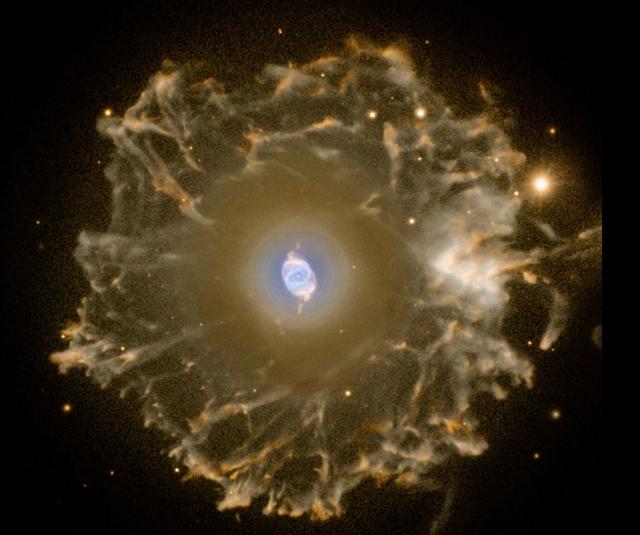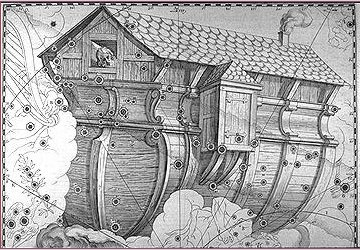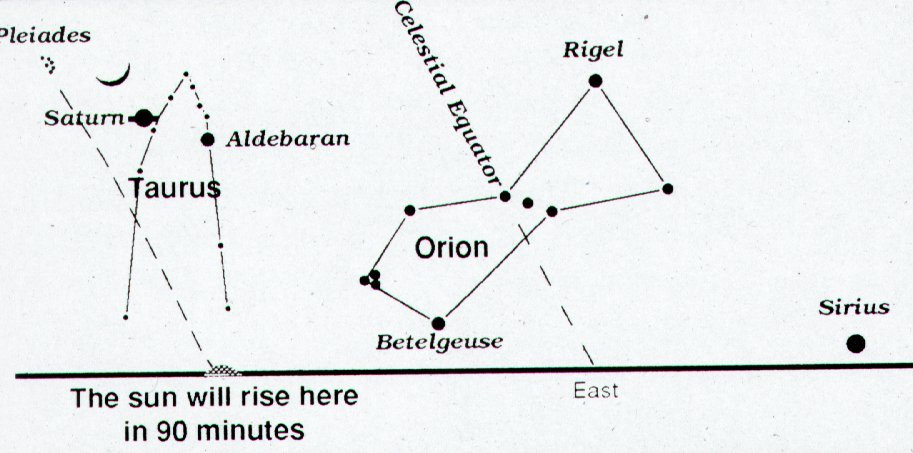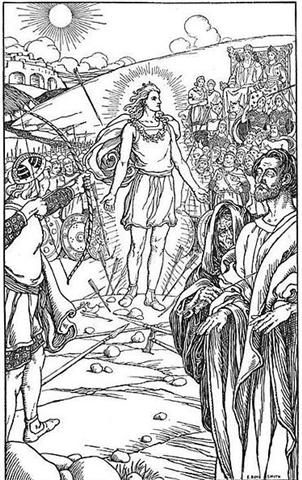Probably it was the precession which motivated why heliacal Aldebaran was positioned at Ga1-4 and 4 days further ahead compared to 0h at the time of Gregory XIII - i.e. 68 right ascension days after 0h at the time of Aldebaran rather than 64 - and the precession of these 4 days could also have motivated the great fishhook in Ga2-11, corresponding to the place of heliacal Sirius at the time of Gregory XIII rather than at the time of rongorongo. And possibly the figure in Ga1-17 was basically the same as that in Ga1-21 in order to draw attention to these precessional 4 days:
Nash (Point) was at the arrow head of the Archer, and his serpentine bow was in the Milky Way and leading down to the upside down Corona Australis:
Menkaure had been given only 6 'years' to live and they could have ended at the vertical line in Auriga when the Full Moon was at the Eye of the Cat:
The time scale of the Gods was not like that of mortals, and time moved lazily as treacle at the solstices. ... The story of Rip Van Winkle is set in the years before and after the American Revolutionary War. Rip Van Winkle, a villager of Dutch descent, lives in a nice village at the foot of New York's Catskill Mountains. An amiable man whose home and farm suffer from his lazy neglect, he is loved by all but his wife. One autumn day he escapes his nagging wife by wandering up the mountains. After encountering strangely dressed men, rumored to be the ghosts of Henry Hudson's crew, who are playing nine-pins, and after drinking some of their liquor, he settles down under a shady tree and falls asleep. He wakes up twenty years later and returns to his village. He finds out that his wife is dead and his close friends have died in a war or gone somewhere else. He immediately gets into trouble when he hails himself a loyal subject of King George III, not knowing that in the meantime the American Revolution has taken place. An old local recognizes him, however, and Rip's now grown daughter eventually puts him up ... And in the midst of Maui struggling with the heavy fish of Toga Nui his belt came loose and his loincloth (maro) fell down and he had to stand there naked for a while before he could get time to pick it up again. ... The fish came near the surface then [cfr Ga2-13], so that Maui's line was slack for a moment, and he shouted to it not to get tangled. But then the fish plunged down again [cfr Ga2-17], all the way to the bottom. And Maui had to strain, and haul away again. And at the height of all this excitement his belt worked loose, and his maro fell off and he had to kick it from his feet. He had to do the rest with nothing on. The brothers of Maui sat trembling in the middle of the canoe, fearing for their lives. For now the water was frothing and heaving, and great hot bubbles were coming up, and steam, and Maui was chanting the incantation called Hiki, which makes heavy weights light. At length there appeared beside them the gable and thatched roof of the house of Tonganui, and not only the house, but a huge piece of the land attached to it. The brothers wailed, and beat their heads, as they saw that Maui had fished up land, Te Ika a Maui, the fish of Maui. And there were houses on it, and fires burning, and people going about their daily tasks. Then Maui hitched his line round one of the paddles laid under a pair of thwarts, and picked up his maro, and put it on again ...
At the time of rongorongo the Belt stars of Orion were rising heliacally about a week before the solstice in June - the month which on Easter Island was named Maro - and possibly the belt of Maui 'came loose' until a time ca 16 nights later when Tau-toru returned to view early in the morning after having been hidden by the powerful light from the Sun. And when Maui had secured his line he could once again put on his loincloth (maro).
We can explain this part of the myth by postulating that when Menkaure lived in the nights as if they had been days it meant that at this time of the year the dates were dictated from the positions of the stars - which since the time of birth of the Julian calendar had moved ahead in the calendar due to the precession. Maro could therefore come twice, like twins. Side a on the C tablet was probably ending at the time when Polaris had reached 0h, viz. 26 precessional days earlier than at the time of rongorongo - with the First Point of Aries at the first glyph on side b. By adding 27 nights to June 18 (169, Ga1-25) we will reach glyph number 25 + 27 = 52 (Ga2-22) at Pollux, which in Roman times had risen with the Sun in 'June 18:
... To conclude these enquiries we may say that if Balder was indeed, as I have conjectured, a personification of a mistletoe-bearing oak, his death by a blow of the mistletoe might on the new theory be explained as a death by a stroke of lightning. So long as the mistletoe, in which the flame of the lightning smouldered, was suffered to remain among the boughs, so long no harm could befall the good and kindly god of the oak, who kept his life stowed away for safety between earth and heaven in the mysterious parasite; but when once that seat of his life, or of his death, was torn from the branch and hurled at the trunk, the tree fell - the god died - smitten by a thunderbolt. And what we have said of Balder in the oak forests of Scandinavia may perhaps, with all due diffidence in a question so obscure and uncertain, be applied to the priest of Diana, the King of the Wood, at Aricia in the oak forests of Italy. He may have personated in flesh and blood the great Italian god of the sky, Jupiter, who had kindly come down from heaven in the lightning flash to dwell among men in the mistletoe - the thunder-besom - the Golden Bough - growing on the sacred oak in the dells of Nemi. If that was so, we need not wonder that the priest guarded with drawn sword the mystic bough which contained the god's life and his own. The goddess whom he served and married was herself, if I am right, no other than the Queen of Heaven, the true wife of the sky-god. For she, too, loved the solitude of the woods and the lonely hills, and sailing overhead on clear nights in the likeness of the silver moon looked down with pleasure on her own fair image reflected on the calm, the burnished surface of the lake, Diana's Mirror ... |
||||||||||||||||||||||||||||||||||||||||||||||||||||||||||||||||||||||||||||||||||||||||||||||||||||||||||||||||||||||||||||||||||||||||||||||||||||||||||||||||||||||||||||||||||||||||||||||||||||||||||||||||||||||||||||||||||||||||||||||||||||||||||||||||||||
















